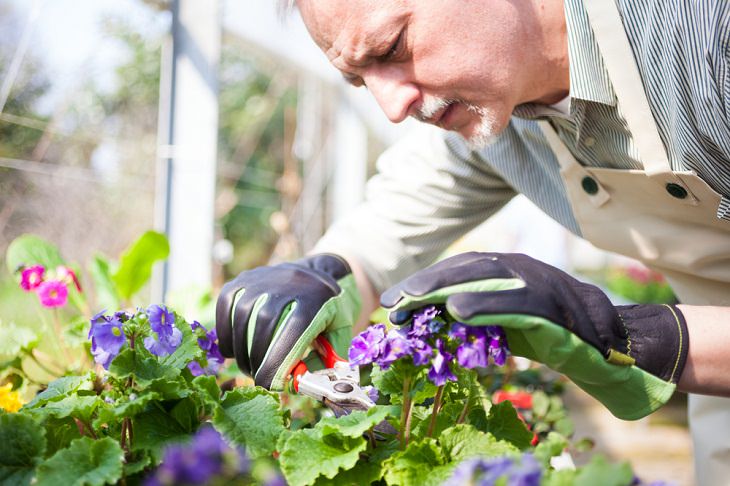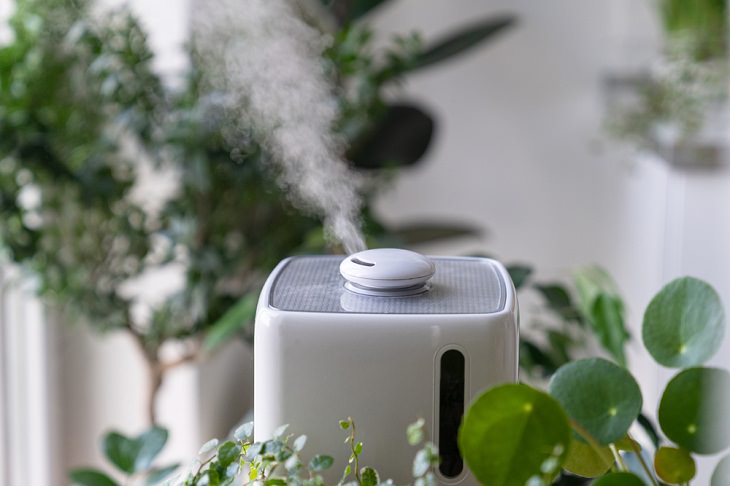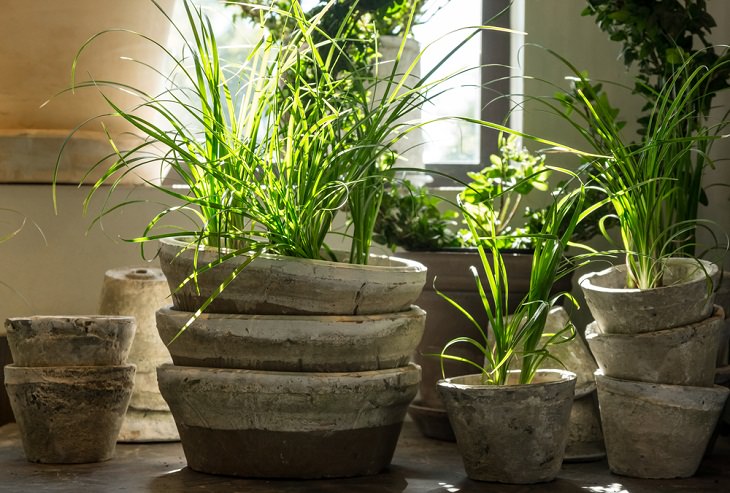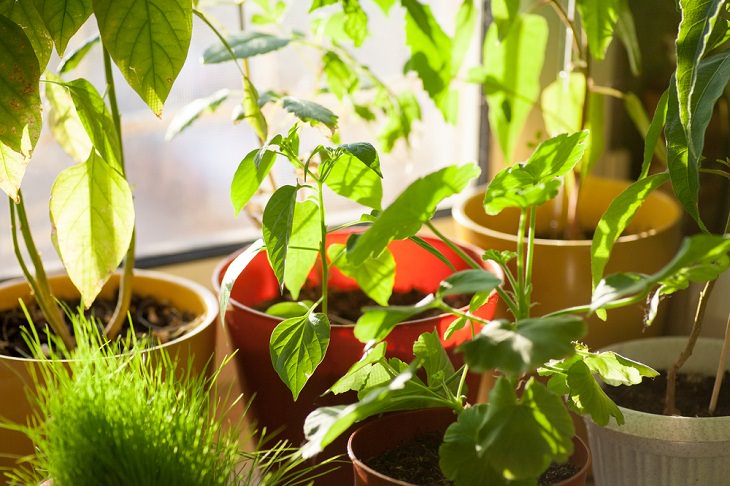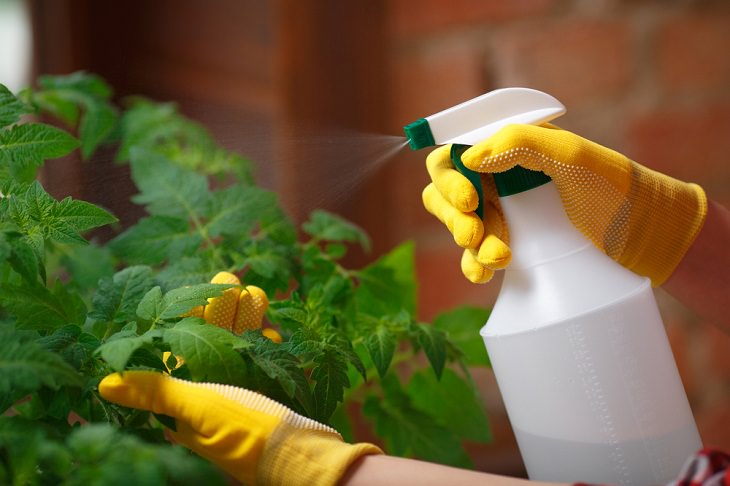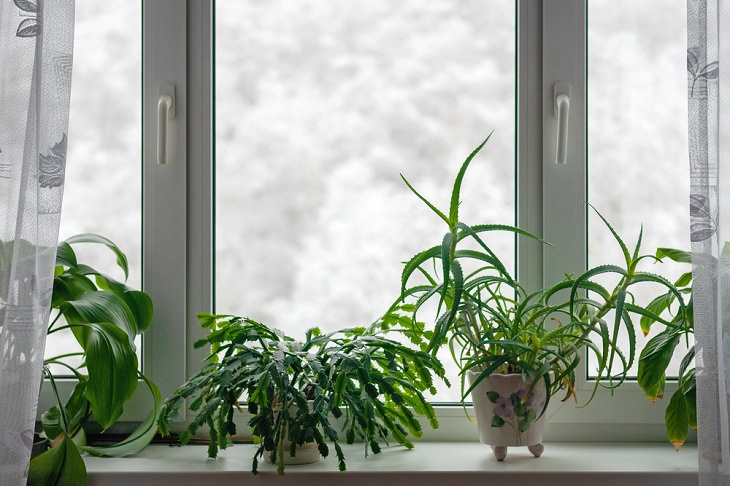Winter is the time for you to keep pruning your indoor plants. This will, of course, depend on the type of plant you have. Succulents, for instance, do not need much pruning at all. However, if your indoor garden primarily consists of vining plants, then you must prune them to encourage branching and bushiness.
The harsh winter weather can be tough on your houseplants. Pruning helps them look healthier and also promotes new growth by preventing the plant from channeling too much energy into dying leaves. Moreover, the cold weather outside can make the leaves of the plants turn yellow or brown and pruning will help them remain in shape.
2. Alter humidity levels
During the winter season, homes generally offer 5-10% relative humidity but plants generally need something around 40-50%. Low humidity, in fact, can be the biggest hurdle that houseplants have to endure during the winter months. Brown leaf tips and the appearance of pests like Spider Mites are some of the common signs that your indoor plants are suffering from low humidity. So, what is the solution?
If you have a humidifier in your home, then simply move your houseplants to a spot where they can enjoy its advantages. Alternatively, you can keep the plants on or near a tray of water from where they can absorb the moisture. Another good option is to cluster your plants in groups as plants naturally release water through their leaves by transpiring. Hence, grouping them together will help utilize that moisture. For further tips, you can read our article on How to Increase the Humidity for Your Houseplants.
3. Be mindful of the temperature
During winter, it’s important to be mindful of the temperature your houseplants are kept in. Fluctuations in temperature, in fact, can really damage our indoor plants. Adjust your thermostat according to the comfort of your plants. Most houseplants are tropical and prefer daytime temperatures between 65 and 75°F (18 to 23°C) and nighttime temperatures above 50°F (10°C).
To ensure your plants get the right temperature, keep them away from heaters, radiators, ovens, fireplaces, and electronic devices. Also, avoid keeping your plants near cold drafts or heat sources, and make sure they are some distance away from exterior windows.
4. Give them adequate light
In winter, there are fewer hours of sunlight. This can be a problem for an indoor garden as the sunlight levels near windows drop up to 50%. Plants, however, need sufficient light to survive. So, if your house doesn’t have many open areas from where the sunlight can stream in, you would be better off keeping the houseplants in places that get sunlight during winter. If you are keeping them near the windows, then make sure that they are properly cleaned off inside and outside for maximum light. However, don’t keep them too close to a frosty window because then they would be at the risk of getting a cold draft all day long.
Another good tip is to rotate the pots when you water the plants. This will help the plants get sunlight from all sides and they will grow more evenly as a result. Also, during the winter months, since homes are closed up, more dust is accumulated everywhere; even on the plants. Wipe down the leaves lightly from time to time so that they can make maximum use of available light.
5. Don't go overboard with the watering
One of the most common issues with maintaining indoor plants is overwatering. It may sound weird, but indoor plants need less water during the winter. This is because plants experience a slower rate of growth in the cold weather and tend to go into hibernation or become dormant. Thus, they need less water to keep them hydrated. Overwatering, on the other hand, can result in root rot. However, bear in mind that different plants have different water needs. For example, plants like drought-tolerant cacti and other succulents might not even need any watering.
Another thing to remember is that the surface of your houseplants will dry out quickly during the winter months. This is one of the biggest reasons that people tend to overwater them during the cold season. To check if your houseplant really needs water, just push your finger into the soil and find out if it’s moist about an inch below the surface. If it is dry, then you can water it accordingly.
Water that’s almost the same temperature as the air is ideal as it will prevent the roots of the plants from being shocked by cold water.
6. Don’t over-fertilize
Much like overwatering, over-fertilizing can also be an issue for indoor plants during the winter months. If your plant is healthy enough, you don’t really need to fertilize it during the winter. In fact, some plants do not need any fertilizer at all.
This is because houseplants barely grow during the cold months and many of them remain dormant. Feeding them extra fertilizer then would only upset their natural cycle. You can resume fertilizing when you start seeing signs of new growth in the plants which is likely to be around springtime.
Please share these tips with those who might find them useful...

